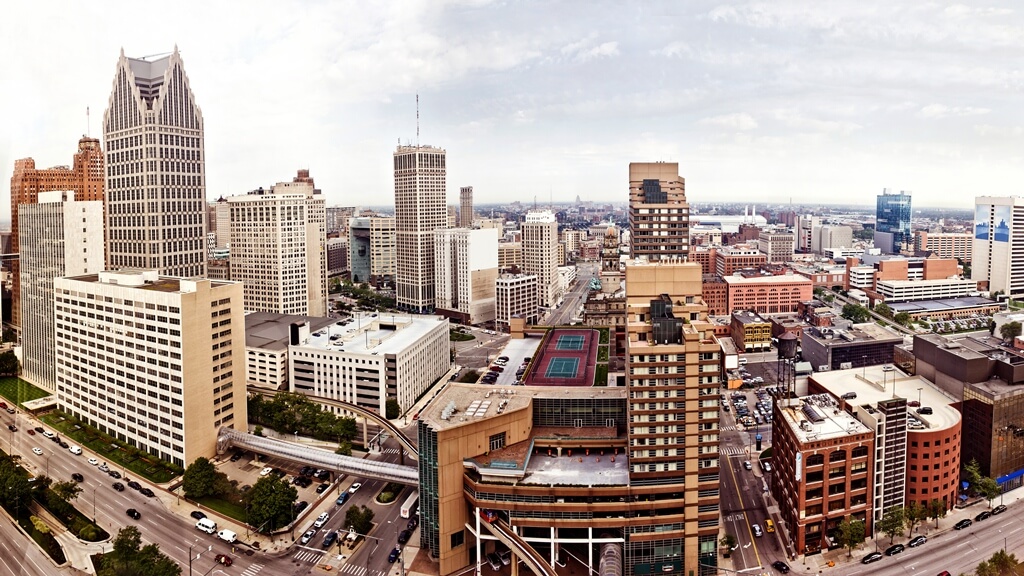Multifamily development remains hot across the Midwest. For proof of this, look to the key Midwest cities of Minneapolis, St. Paul, Chicago and Detroit. These four cities all saw significant new apartment projects in 2015, projects that added, in some cases, thousands of new apartment units to these metropolitan regions.
And each of these cities will see even more multifamily development in 2016.
RENTCafe, a national apartment search Web site and a part of property management software company Yardi, provided some interesting numbers to Midwest Real Estate News. According to RENTCafe, 18 new rental developments each with 50 or more units opened in the Chicago market in 2015.
These new multifamily buildings added 3,498 units to the Chicago area’s apartment supply. The North Water and AMLI Lofts were the two biggest apartment developments last year here, each offering 398 new multifamily units.
Minneapolis saw the addition of 11 new rental developments with more than 50 units each, according to RENTCafe. These additions brought 1,905 new apartment units to the Minneapolis market, with the WaHu student-housing development adding the greatest number, 329 units.
In St. Paul, RentCAFE reported, two new apartment projects of more than 50 units each opened, bringing 362 new multifamily units to the city. Vintage on Selby led the way here with 210 new units.
Three new apartment developments of more than 50 units opened in Detroit last year, bringing a total of 228 new units to the area. The Residences at the David Whitney Building brought the greatest number of new units, 105.
These cities are hardly outliers. Developers are adding multifamily units to Kansas City, Indianapolis, Cincinnati and Louisville, too. In fact, they’re building new apartment developments in cities all across the Midwest.
This leads to the big question: Are developers adding too many apartment units in some markets? Is there a chance that supply will outstrip demand in certain regions?
Paul Fiorilla, associate director of research with Yardi Matrix, said that this isn’t a worry yet, especially in the downtowns of large urban markets, where the majority of the new apartment developments are rising. The demand in most urban markets — though there might be a bit of oversupply in Austin, Houston or maybe Washington D.C. — remains higher than the available supply, Fiorilla said.
“There are a whole bunch of reasons,” Fiorilla said. “Populations are increasing in urban areas, and in particular in the prime 20- to 34-year-old renter group. Strong job growth is producing high numbers of household formations. Homeownership rates are showing no signs of recovering because of individual preferences, credit issues and the difficulty in affording down payments. Millennials and retiring Baby Boomers are increasingly choosing urban areas to live.”
Apartment vacancy rates are evidence of all this, Fiorilla said. He said that nationwide, multifamily vacancy rates average about 4 percent, which is quite low.
“Even if supply oversteps demand in some markets, the increase in the vacancy rate would still only put market vacancies closer to historical norms, which we don’t see as a serious problem,” Fiorilla said.
The amenities
When people do move into downtown multifamily developments, what amenities do they want? Fiorilla said that many of the most sought-after amenities are being provided not by the multifamily developments, but by cities themselves.
“Cities are becoming much more livable than they were in the past,” Fiorilla said.
He pointed to the investments many Midwest cities have made in parks, bike paths, shopping and entertainment options. At the same time, crime in most cities has actually dropped significantly, he said.
The amenities that apartment buildings are offering, though, are impressive. Fiorilla cited gyms, pools, shared workspaces, fast online connectivity and on-site restaurants as some of the most popular apartment perks today.
This is all good news. But it doesn’t mean that the multifamily market doesn’t face challenges. One of the biggest? The new supply of apartment buildings is overwhelmingly targeted toward the high-end buyer. Renters seeking new affordable multifamily projects won’t find much available to them.
“If there is a concern about supply, it is in the arena of affordability,” Fiorilla said. “The increasing cost of land and labor has made new construction very expensive, so many developers say they can only make needed returns by building units marketed to upper-income renters.
The problem with this is an obvious one: There are only so many upper-income rental households out there. This means that the new apartment supply is increasingly geared toward those earning bigger incomes while a significant portion of the demand for new rental units is actually coming from low- and middle-income renters.
Fiorilla said that cities are trying to address this problem through developer tax credits and rental subsidies for low-income renters. Cities are also requiring developers to set aside a certain number of units in their market-rent apartment projects for low-income residents.
But these solutions are imperfect fixes, Fiorilla said.
“Even if successful, these efforts can only address a very small portion of the problem,” he said.
There is hope, though. Fiorilla said that increased apartment development in urban areas can only help solve this rental inequity.


